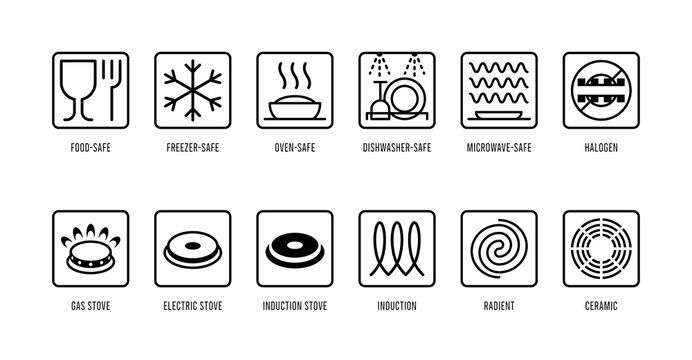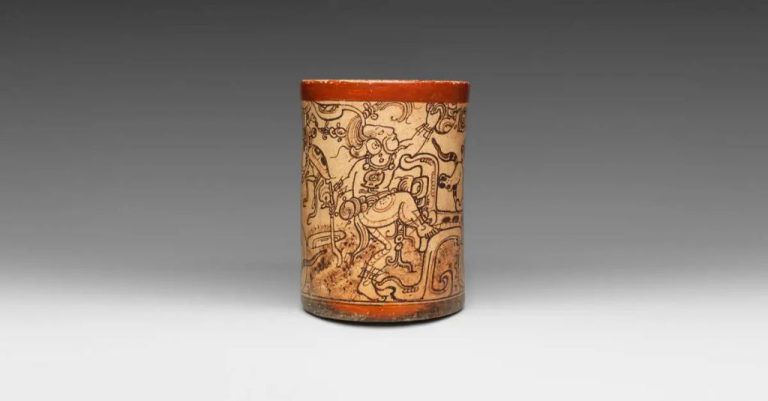Which Symbol Is For Baking In Oven?
There are standard symbols used in recipes and on food packaging to indicate different cooking methods that should be used to prepare or cook foods. These symbols provide a universal visual language to quickly communicate key information about how a food should be handled. By recognizing some of the most common baking and cooking symbols, consumers can better understand how to correctly store, prep, and cook foods according to manufacturers’ and recipe creators’ directions.
Oven Baking Symbol
The most common symbol used to indicate baking in an oven is a circle with wavy lines inside. This symbol is found on many ovens and conveys that the oven will produce heat from both the top and bottom to surround food. The wavy lines represent the flow of heat emanating in the oven chamber during the baking process.
According to Our Easy Guide to 10 Common Oven Symbols & Functions (https://www.pinterest.com/pin/387098530466735275/), this universal baking symbol communicates that the oven will bake food using the conventional or traditional setting. The heat is dispersed throughout the oven cavity to penetrate food from all sides, allowing even cooking. This all-around baking method is ideal for cakes, casseroles, roasts, and more.
Other Common Cooking Symbols
In addition to the oven symbol, there are a variety of other common symbols used to indicate recommended cooking methods for food packaging and cookware:
Microwave Symbol: This symbol indicates that a container or food item is microwave safe and can be reheated using a microwave oven [1]. The symbol is a rectangular box with wavy lines representing microwaves.

Grill/Barbecue Symbol: A grill or barbecue with flames underneath signifies that food should be cooked over an open flame or hot grill [2]. This method imparts a charred, smoky flavor.
Fry Symbol: A frying pan symbol tells you to shallow or deep fry ingredients in hot oil. This cooking method produces a crispy exterior and tender interior.
There are also symbols for convection ovens, induction cooktops, dishwashers, freezing, and more. Understanding these icons allows you to identify the proper cooking method to achieve optimal results.
Why These Symbols Matter
Cooking symbols printed on food packaging serve an important purpose for both manufacturers and consumers. They provide a quick visual guide to help identify proper cooking instructions and handling precautions (Understanding Food Labels | The Nutrition Source). For consumers, cooking symbols reduce the time needed to locate key information before preparing a food product. Symbols allow customers to immediately spot heating and cooking directions at a glance.
For example, the oven symbol lets you instantly recognize that the item needs baking, without having to search for text instructions. This helps prevent mistakes that could make food unsafe or unpleasant to eat if the wrong cooking method is used. According to Harvard’s Nutrition Source, symbols “can help consumers identify foods that align with their values or lifestyle” (Understanding Food Labels | The Nutrition Source).
Overall, standardized food symbols help speed up meal preparation and cooking for home cooks. They also ensure safety by highlighting proper handling and preparation of different items. When used correctly, food symbols are an invaluable tool for both manufacturers and consumers.
History of Cooking Symbols
The use of symbols and pictograms to convey cooking instructions and warnings has a long history. According to the Encyclopedia Britannica, the earliest known cookbooks dating back to ancient Mesopotamia in 1700 BC contained illustrations of cooking processes and ingredients. However, these symbols were not yet standardized.
The push to standardize cooking symbols came during the early 20th century as packaged foods became popularized. Brands wanted easy-to-understand labeling that could overcome language barriers on international products. This led to the creation of organizations like the International Organization for Standardization (ISO) that published standards for graphical symbols, including ISO 7010 for safety symbols in 2003 and ISO 8541 for cooking symbols in 2021.
Today, organizations like the FDA and USDA regulate the required cooking symbols on food packaging in many countries. Common symbols indicate instructions to bake, microwave, refrigerate or freeze foods. Standardizing these pictograms helped consumers more safely and conveniently prepare packaged foods.
Sources:
https://www.iso.org/standard/72495.html
https://www.iso.org/standard/56791.html
International Use
Food safety symbols are used globally to help communicate important food handling and preparation information in a universal way. While the main symbols are fairly consistent, there can be some variation in how they are used across different countries and regions. Specifically:
Europe and the US tend to use the same basic set of food safety symbols created by the International Association for Food Protection [1]. However, Europe relies more heavily on these standardized symbols, requiring them to be included on food products.
Some Asian countries like Japan and China use their own set of food safety symbols that, while similar, have slightly different designs than the international standard [2]. For example, the microwave symbol may have additional elements or a different border.
Certain symbols like the oven symbol may have additional regional variants to indicate convection, grill, or other oven functions. The icons are also sometimes presented in black and white instead of color.
So while the core symbols are largely consistent, local preferences and regulations can lead to small variations in their exact implementation and use around the world.
Regulations
Food labeling and packaging symbols are regulated by government agencies to ensure consistency, accuracy, and safety. In the United States, the main regulatory body overseeing food symbols is the Food and Drug Administration (FDA). According to the FDA’s Food Labeling Guide, “FDA regulates the label statements made on packaged foods to ensure that they contain the required information and are truthful and not misleading” (Food Labeling Guide). Some key regulations include:
Mandatory labeling information like the Nutrition Facts panel, ingredient list, name and address of the manufacturer, net quantity of contents, etc. (UC Davis).
Standardized icons and symbols that convey specific meaning like “keep refrigerated,” “gluten-free,” “recyclable,” etc.
Restrictions on unapproved health claims or misleading icons that could confuse consumers.
Requirements for the legibility, prominence, and formatting of mandatory labeling information.
These regulations help ensure that food labels use recognizable, standardized symbols; provide required information clearly and accurately; and do not make false or confusing claims. This benefits both consumers and manufacturers by building trust and consistency around food labeling.
Common Mistakes
It’s easy for home cooks to misinterpret cooking symbols, especially if they’re unfamiliar with standard practices. According to Eat Smart Products, one of the most common mistakes is misreading a symbol and ending up with undercooked or overcooked food. They advise double-checking any symbols you’re unsure about to avoid this issue.
Another mistake outlined by How to Fix 21 Common Cooking and Baking Mistakes is misusing symbols in recipes. For example, a recipe may specify baking at 350°F, but you mistakenly set the oven to broil instead. Always take the extra time to carefully review symbols and instructions before cooking to prevent costly errors.
Overall, be cautious when encountering new or ambiguous symbols. If you’re unsure of what a symbol means, look it up online or in reference materials. Following cooking symbols precisely is key to achieving the desired results.
The Future
As technology and food science advances, we can expect to see changes and additions to the common food symbols used today.[1] Some potential developments include:
– New symbols for emerging food technologies like 3D printed food, lab grown meat, and food designed at the molecular level. These new production methods may require distinct icons to convey how the food was created.
– Expanded use of symbols on smart appliances and packaging that can scan and interpret the meaning of icons via image recognition software.
– Dynamic or animated symbols that can change to reflect food freshness and safety based on sensors in packaging.
– Personalized food symbols based on an individual’s dietary needs, allergies, preferences and goals. For example, someone could customize their own icons for “vegan” or “low-carb.”
– Symbols that convey more data like full nutrition facts, origin, sustainability ratings, and preparation instructions. Augmented reality may allow symbols to link to or overlay detailed information.
– New symbols that align with evolving food values, such as symbols for positive environmental impact, fair labor practices, non-GMO, and ethical treatment of animals. Interest in value-based food choices will likely grow.
While the exact path of symbol evolution is unclear, we can expect food symbols to adapt to new technologies, provide more personalized data, and reflect the changing ethics and priorities around food. The icons we use must keep pace with how food is made and what information people need to make informed choices.
Key Takeaways
The oven baking symbol, which looks like a circle with a slash or line through the bottom half, indicates that a food item should be baked in the oven. This is different from the symbols for grilling, microwaving, or other cooking methods.
There are a variety of other common food preparation symbols, including ones for refrigeration, freezing, and washing. These standardized images help consumers understand how to properly handle and cook foods.
Cooking symbols serve an important purpose by quickly conveying directions and safety information. They have a long history, with the first ones appearing in the 1930s and becoming widespread over the following decades.
While regulations vary somewhat internationally, most countries use some version of the main symbols. Following these directions correctly prevents foodborne illnesses and other problems.
Consumers should take care to identify symbols properly, as some common mistakes can lead to incorrectly preparing foods. As food technology evolves, we may see new symbols developed in the future.





